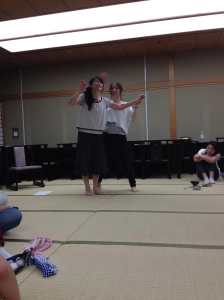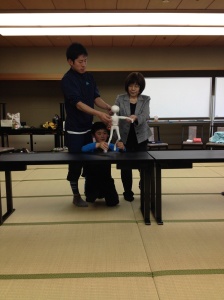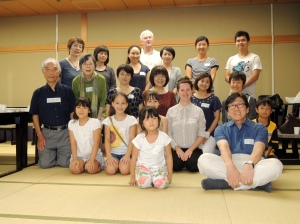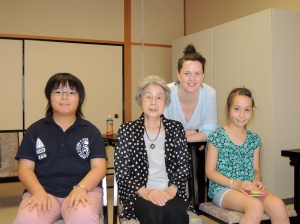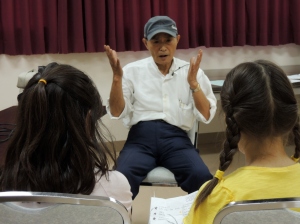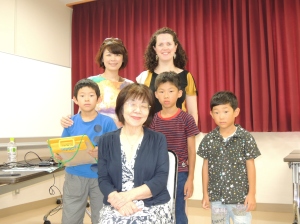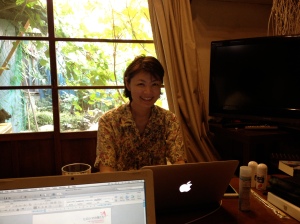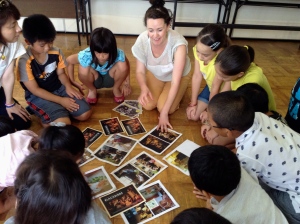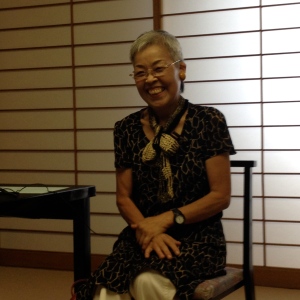I don’t know much, or certainly enough, about Trident: the UK’s nuclear weapon operational system. When I have thought on’t, my minds’ eye has conjured a mighty Zeus – his brow furrowed, a crown aloft his head, the waves crashing around him with considerable force as he yields his deadly trident. The reality, it seems, is not a million miles away.
I was not aware that even now, whatever time zone you happen to be in, there is at least one of the UK’s Vanguard class submarine armed with Trident II D-5 ballistic missiles – equipped with thermonuclear warheads – on sea patrol somewhere in the Atlantic Ocean. There are 3 others “docked” at Clyde Naval Base on Scotland’s west coast. The system was launched in 1980 and was intended to “pose a potential threat to key aspects of Soviet state power.” The Cold War was in full swing and this was perceived to be the best way to become invulnerable to ‘surprise of pre-emptive attack’.
34 years later, The Cold War has defrosted but Trident’s steely, aquatic friend still stalks the oceans as an “aerial trails behind the submarine, picking up radio signals from Britain if the prime minister presses the nuclear button”, Patrick Barkham writes in his article in The Guardian. Barkham continues: “If there was nuclear war and the captain was unable to communicate with base, there is a personal letter on board written by the prime minister to the captain. The contents are top secret but it is thought that the instructions include allying with the US, travelling to Australia if Europe has been destroyed and, ultimately, firing the weapons.”
In the event that the Captain reads that letter, we are at Nuclear War. And Europe almost certainly risks being destroyed. Though the current yield of nuclear warheads loaded onto the missiles is unknown, it has been set out that – in the future – each submarine will be armed with 8 missiles and a maximum of 40 warheads. Each of these warheads has a nuclear yield power of 80-100 kilotons.
The atomic bomb that was dropped on Hiroshima had an explosive power equivalent to 13 Kilotons of TNT. Each of the warheads on the submarine has around 7x the power of the Hiroshima bomb. The combined power of the warheads is 240x the Hiroshima bomb. There are another three submarines with a similar nuclear yield, which would make an attack – should all four submarines be engaged, 720x more powerful. The Hiroshima bomb killed 135,000. In a crude mathematical equation, if Zeus did pierce the waters with his triple pronged fork – over 97 million people could be killed instantly. This is what a Nuclear Winter looks like. This is just the UK’s nuclear weapon arsenal – 9 other countries are currently in possession of nuclear weapons. Russia has 10,000 nuclear warheads, the US has 8,000.
I am by no means any sort of expert. I am not even a well-informed amateur, but these figures seem pretty terrifying. Of course, there is a long and extremely complicated chain of events and an unprecedented level of civil and political breakdown that would have to occur before the Captain even got close to reading that letter. Additionally, Governmental emphasis is firmly on Trident as a deterrent, not an aggressor. Still, whilst that submarine is on patrol – and certainly for the four members of that crew who are aboard it – the possibility of it being used remains real.
Last night, I was preparing to do my own interview with Hiroe Sato, who was 7 at the time of the bombing and is now 76. Whilst I was thinking about what I ask her, I got slightly side tracked by looking into all of this. It seems like one of the most frightening things about studying Hiroshima. For though the horror of these events is in the past, the danger posed by Nuclear Weapons is increasingly present.
Anyway, its’ pretty depressing – nay, bone chillingly terrifying stuff – and we shan’t dwell on it for now.
I had been very much looking forward to meeting Sato San and asking questions of my own. I was particularly interested in the aftermath of the bombing and specifically – the creation of the “Peace” constitution, i.e – the constitution that the US drew up with Japan to set out the terms of its surrender. Key aspects of this constitution included the demotion of the Emperor as a deity to a purely symbolic, ceremonial Head of State and also – crucially – the stipulation that the country never takes up arms again.
Japan has admirably embraced peace as its national brand. It is everywhere, most visibly in the signature Japanese photo pose (cue inverse, two fingered swearing). On August 6th, peace was suddenly a prefix for EVERYTHING – there was a peace club, peace lanterns, peace concert and a peace walk. Yorie and I also enjoyed a peace beer, peace Okonomiyaki (a Hiroshima speciality) and a peace animation film. It was so damn peaceful it was almost maddening. But that beer did taste good and a whole lot better than WAR beer. Oh no. Wrong.
In regard to the Peace or “Heiwa” constitution, even though the Japanese government did have a role in its creation, the terms were – as far as I understand it and am sure its more complicated that this – set out by the US. One of the questions I asked Sato San was whether, if the US hadn’t demanded the disbanding of the army, the Japanese people would have aimed to seek vengeance for the bombing. Sato-San insisted that Japan wanted peace, even if the US hadn’t demanded its loss of arms. In proof, she cited that – after the bombing – some Australian soldiers came over from a nearby town, Kure. She said that nobody wanted to harm them or attack them. I suppose when you have seen people’s skin melting off their body, the last thing on your mind is more fighting.
She said that she didn’t know anyone that had wanted revenge for the attack. I find that totally admirable, but almost a little unbelievable. Unfortunately, it seems to be the human instinct to, when hurt – retaliate. Whether its getting the upper hand in an argument, having the last word, hitting back when someone hits you – its seems to be a lamentable human tendency to”get your own back”. Indeed, this is one of the main narratives of war. Yet, it is to Japan’s credit if they truly do feel that way. If this attitude was adopted globally, then maybe we could get rid of the tit-for-tat, defence-attack, fear based backbone of universal nuclear weapon strategy. I am sure I am hugely, monolithically oversimplifying the issue, but these are mere blog-based musings. “Tis not, indeed, the 9 o’clock news.
In sharp contrast to her surroundings – the interview had to take place from her hospital bed – Sato San was bright and cheery throughout. She sat cross-legged on her bed, with age-defying dexterity, and chatted happily. Years of smiling are etched onto her face and that alone feels extraordinary. She talked about her childhood before the bombing, saying that she doesn’t remember feeling any fear about the war and recalling games of hopscotch, samurai role play and the fact that – due to the successful ryokan (inn) her parents ran – she didn’t even really go hungry. A rare thing indeed in war ravaged Japan where most of the domestic population was severely malnourished.
The only time her voice cracked was when she spoke about the death of her brother on August 6th.
Sato San had been evacuated to a nearby town a couple of weeks before. She said that she felt lonely there and it was the first time that she had to do the housework, help with the dishes and the first time she had been away from her family. On August 5th, her parents had come to see her and she remembered feeling extremely happy; they had left her older brother in the city. When she woke up on August 6th, she recalls how noisy the frogs were. Her mum and dad were still with her as she headed off to school. At the start of the lesson, they saw a blinding flash in the sky. Prior to the atomic bomb, they had been through many air raids and were trained in what to do: to lie down and cover their eyes and ears. This is what she did.
Her dad had tried to go back to the city straight away, but was not let through the blockades surrounding blazing Hiroshima. As the owner of a well-respected, financially successful Ryokan he wanted to try and find his staff members – and of course, his 13 year old son. He was prevented from entering the inferno. Later on that day, the three of them tried to get back into the city. The main bridge into Hiroshima had been completely destroyed, but they walked around the perimeter to access the city. What they saw was a living hell.
Her mother began desperately searching for her son. People told her that all of the children that were in his school were dead – but somehow, her mother insisted that he had managed to stay alive. Meanwhile, Sato San had been caught in the flames and suffered severe burning across her chest, she remembers that her mother didn’t pay any attention to her as she frantically scoured the landscape for her brother. By the time she accepted he was dead – Sato San’s wound had rotted, leaving a hole in her chest. She remembers her mum apologising over and over again. Hugging her, and saying “gomenasai”. Sorry.
They stayed in the city to help the wounded and deal with the bodies of the dead. Her mother began to sort through piles of remaining bones, thinking that the smaller ones might belong to her son and his classmates.
After the bombing. her dad told her they needed to forget everything to go on living: any complaint, any resentment, any hatred. Sound advice and they lived by it. Sato san recalls the reconstruction of the city, telephone lines going up – in a display that reminded her of the circus – and life gradually returning to normal.
2 hours sped by and there were so many questions I wanted to ask that I didn’t have time for. At the end of the interview, Sato San walked out of hospital and ushered us into a nearby Okonomiyaki restaurant. I felt rather gleeful and giddy to be in the presence of a hospital escapee. Alas, she didn’t stay but at the end of the meal – we found out she had already picked up the tab.
Sato San is bright, charming, fun and sparky: a brilliant human being. As a living, breathing historical monument, she is essential. Looking into her eyes, seeing her scars, hearing her speak and knowing in a very real sense what the true human sacrifice of nuclear war is, is unspeakably significant. I would very much like Dave Cameron to meet her.
And, if he plays his cards right, he might get a free plate of Okonomiyaki too.

